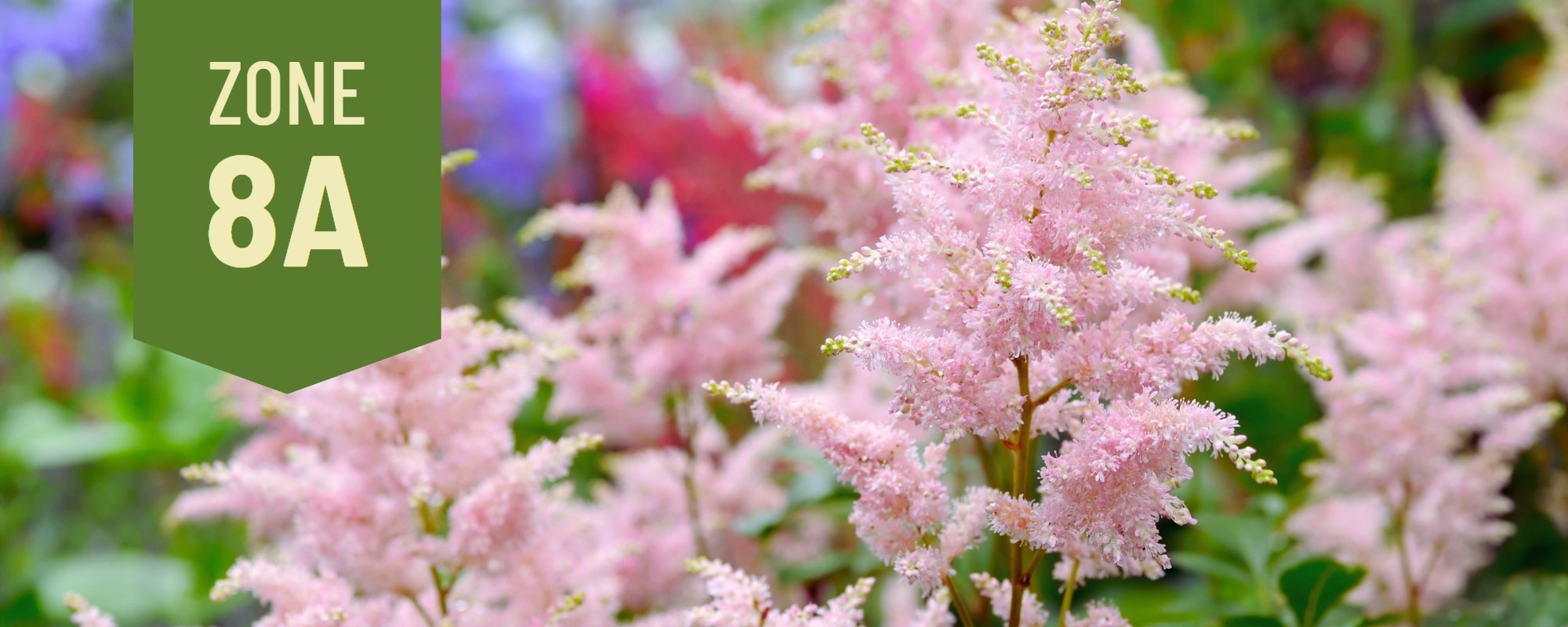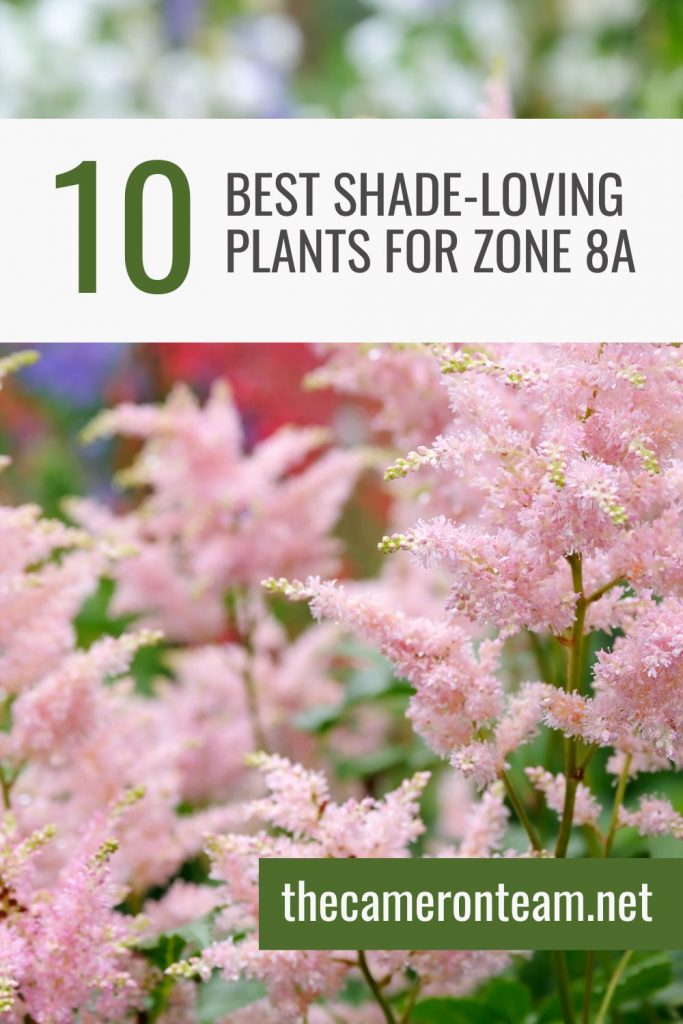Wilmington, NC, is located in the gardening zone 8a. Zone 8a is a region with mild winters and hot summers, making it a suitable environment for many different types of plants. However, if you have areas in your garden that are shaded or receive limited sunlight, it can be challenging to find suitable plants that will thrive in these conditions. Fortunately, there are many shade-loving plants that can thrive in zone 8a, providing color and texture to your garden all year round.
Please note: The Cameron Team has not been paid or received any other compensation to include any of the products featured on this post, but the author has included affiliate links and content. If you click on a link, they may earn a commission – a high-five for great content!
Here are 10 of the best shade-loving plants for zone 8a:
1. Hostas
Hostas are one of the most popular shade-loving plants due to their attractive foliage and low maintenance requirements. They come in a variety of sizes, colors, and patterns, making them a versatile addition to any garden. They are also known for their ability to thrive in a wide range of growing conditions, including poor soil and drought. They are relatively easy to care for and require minimal watering, making them an ideal choice for busy gardeners or those with limited time.
2. Astilbes
Astilbes are a favorite among gardeners for their beautiful, delicate flowers that add a touch of elegance to any shade garden. Their feathery plumes of flowers appear in mid to late summer, and are available in a range of colors, including shades of pink, purple, and white. They prefer partial to full shade and moist, well-drained soil, but can tolerate some drought once established. However, they may struggle in very hot and dry conditions, so it’s important to keep them well-watered during the summer months.
3. Ferns
Ferns are an excellent choice for adding texture to your garden. They come in many different shapes and sizes and can be used to create a lush, green backdrop in a shady area. Some popular ferns for zone 8a include the autumn fern, Japanese painted fern, and lady fern. They are a great choice for adding texture to the garden and are low-maintenance with the ability to thrive in a variety of soil conditions. Once established, most ferns require very little care, making them a great choice for busy gardeners or those with limited time. However, they do require consistent moisture, so it’s important to keep them well-watered during hot and dry periods.
4. Heucheras
Also known as Coral Bells, these plants are prized for their colorful foliage. They come in a wide range of colors, including purple, red, and silver, and are an excellent choice for adding interest to a shaded area of your garden. They are also admired for their compact growth habit, making them a great choice for small gardens or containers. Their delicate, bell-shaped flowers bloom on tall, slender stems above the foliage, adding another layer of interest to the plant. While they prefer partial to full shade, some varieties can also tolerate more sun, making them a great choice for a variety of garden situations. However, it’s important to note that heucheras will need more water in full sun and may require more frequent watering than those planted in partial shade.
5. Bleeding Hearts
Bleeding Hearts are known for their heart-shaped flowers that bloom in shades of pink and white. They prefer partial shade and rich, well-draining soil. They are a low-maintenance plant that requires minimal pruning and can even tolerate some drought once established. However, it’s important to note that they may go dormant in the heat of summer, so it’s best to pair them with other plants that can fill in the gaps in your bed during this time. Otherwise, they are versatile and a great choice for adding height and interest to your shade garden.
6. Hellebores
Hellebores are also known as Lenten roses, and they bloom in late winter or early spring, providing color when other plants are still dormant. They prefer partial shade and come in a variety of colors, including pink, purple, and white. They are a great addition to any garden, not only for their early bloom, but also for their low-maintenance requirements. They are resistant to pests and diseases, and once established, they require little watering. Hellebores are also deer-resistant, making them a great choice for gardens in areas where deer are common.
7. Tiarella
Tiarella, also known as foamflower, is a low-growing plant that thrives in partial to full shade. It produces delicate white or pink flowers in the spring. The foliage of the foamflower is also worth mentioning, as it is deeply lobed and resembles a maple leaf. It forms a dense mat of foliage that looks great even when the plant is not in bloom and turns red in the fall. It is a versatile plant that can be used in a variety of garden settings. It is perfect for edging pathways or planting in rock gardens, and can also be used as a ground cover to help suppress weeds. Tiarella is also easy to care for, requiring little pruning or maintenance. It prefers moist, well-drained soil, but can tolerate dry conditions once established. This plant is a great choice for gardeners looking to add interest to their shade garden while keeping maintenance to a minimum. It was even selected as the 1986 NC Wildflower of the Year.
8. Ajuga
Ajuga, also known as Bugleweed, is a low-growing perennial plant that is prized for its attractive foliage and vibrant flowers. It is a member of the mint family and is known for its ability to spread quickly, making it an excellent choice for ground cover in a shaded area of your garden. It has glossy, oval-shaped leaves that range in color from deep green to shades of purple and bronze. In the spring, Ajuga produces spikes of flowers in shades of blue, purple, and pink that rise above the foliage, providing a splash of color to your garden.
9. Virginia Spiderwort
Virginia Spiderwort, also known by its scientific name Tradescantia virginiana, is a perennial herbaceous plant native to the eastern United States, including North Carolina. It typically grows to be 1 to 2 feet tall and has long, narrow leaves that are up to 12 inches long and 1 inch wide. They produce showy blue or purple flowers from May to July, which typically last for only a day. They do self-seed and spread easily.
10. Creeping Phlox
Available in a variety of pastels, Creeping Phlox is a good blanket ground cover for an area that receives sun but has shade for half the day. It is a hardy plant that requires little maintenance once established. You can even plant it between pavers or on rock walls. Creeping Phlox blooms in the spring and remains green until it dies back in the winter (some species may turn red or bronze in the fall). In addition to its beauty, Creeping Phlox is also known for its ability to attract butterflies and other pollinators to your garden.
In conclusion, there are many shade-loving plants that can thrive in zone 8a, providing color and interest to your garden all year round. From Ferns to Hostas to Coral Bells, there are many different types of plants to choose from, making it easy to create a beautiful and thriving garden in a shaded area.














